As you look into surfboards and the different options that they can come with, you have probably come across surfboard fins.
They seem fairly common but come in different styles and shapes. They must have significance when surfing, but just how important are they?
Does a surfboard need fins?
Having fins on a surfboard is not a requirement. You can surf with a finless board. However, fins are pretty helpful when they are attached to the surfboard. While you can surf without fins, their absence can make steering difficult. This is especially true for a new surfer who is not an expert.
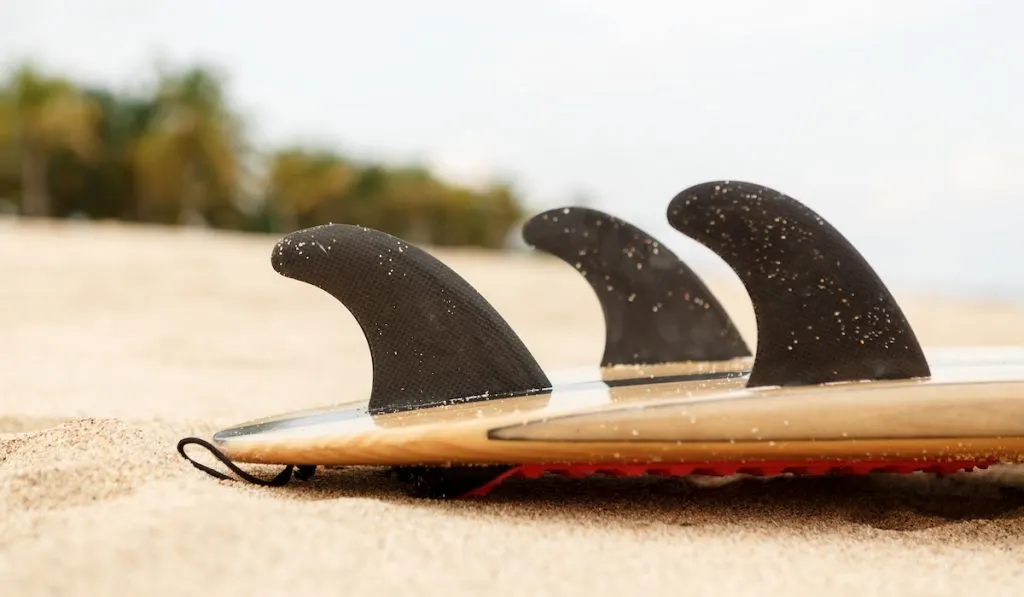
Fins clearly impact the surfing experience. But with different options to choose from, how can you make the right pick for you?
In this article, we’ll take a closer look at surfboard fins including styles and setups to consider before making a purchase.
Does a Surfboard Need Fins?
A surfboard does not necessarily need fins, but riding one with fins allows for stability.
In fact, the early Polynesians surfed without fins, but most of their surfing was without some of the sporty maneuvering we know of today.
In 1934, Tom Blake introduced fins on surfboards. Blake also created the hollow surfboard. Since introducing fins on surfboards, maneuvering surfboards in more ways have been possible.
All in all, the need for fins on a surfboard is more subjective than it is objective. Many expert surfers might be able to steer their board and enjoy surfing without fins. But the same may not be said for beginners.
One thing you may notice while surfing without fins is the shakiness of the surfboard’s tail. Besides that, certain maneuvers, such as lower-level spray and spins, are easier to perform without fins.
Types of Surfboard Fins
There are 2 main types of surfboard fins: removable fins and glassed-in fins.
Removable Fins
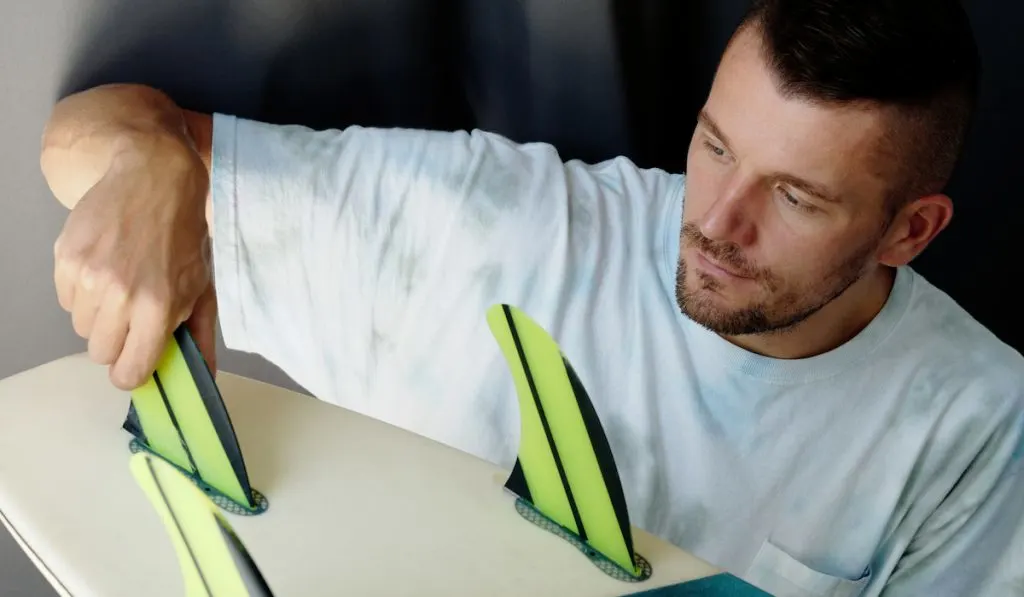
As the name says, removable fins can be removed and replaced. They are typically attached to boards through boxes using a fin key. They may also be called Fin Control System Fins (FCS Fins).
Glassed-In Fins
Glassed-in fins, on the other hand, are not removable. They remain attached to the board and cannot be replaced. Glassed-in fins are typically found in old surfboard models or custom-made surfboards.
How to Choose Surfboard Fins
The type of surfboard you have will direct whether or how you choose your fins.
If your surfboard is glassed-in, then you do not have to worry about choosing a fin. Glassed-in surfboards cannot be changed.
You will find that longboards are compatible with most types of fins. But in other surfboard styles, you may have to be more precise when choosing a fin.
Besides considering your surfboard, you have to think through what you want from the fin. There are a number of factors to keep in mind before making a selection.
Box Type
The box type determines the type of fin you get. If the box is incompatible with the fin, then there is no point in getting that fin. It will not install correctly on the board.
There are 2 main types of boxes:
Single Tab Fin Boxes
Single tab boxes are also known as futures. They have a single channel that connects to the entire length of a single rectangular base fin. The fins may be attached with or without screws.
Double Tab Fin Boxes
Double tab fin boxes can be either FCS or FCS II (FCS = Fin Control System). The fin control system was only introduced in the last 2 decades but has quickly become the most popular fin system.
FCS fins are installed through 2 plugs or tabs screwed into the surfboard.
The FCS II is more recent. It differs from the FCS in that it does not require fin keys or screws for attachment. Also, FCS II system is backward compatible. So, you can use FCS fins with an FCS II box using a compatibility kit.
Fin Flex
The fin flex, also called the fin flexibility, is vital to how your board controls some types of waves. Stiffer fins respond to waves faster, are more stable, and are perfect for hollow waves. They are also great for surfers across all skill levels.
Flexible fins, on the other hand, are more suited for fun waves. They are great for quick turns, but they do not have as much control as stiffer fins.
In some fins, the base and the tip have different flexibilities. For example, some fins have stiff bases alongside flexible tips. With this type of fin, you can get stability and agility in one.
Fin Sweep
The fin sweep or fin rake is a measure of how tilted the fin is to the back.
If you desire a fin for easier or shorter turns, choose one with less sweep. Fins with less sweep are also great for quick turns.
But if you want something that allows you to enjoy the big waves and ride longer tuns, choose fins with longer sweeps.
Fin Size
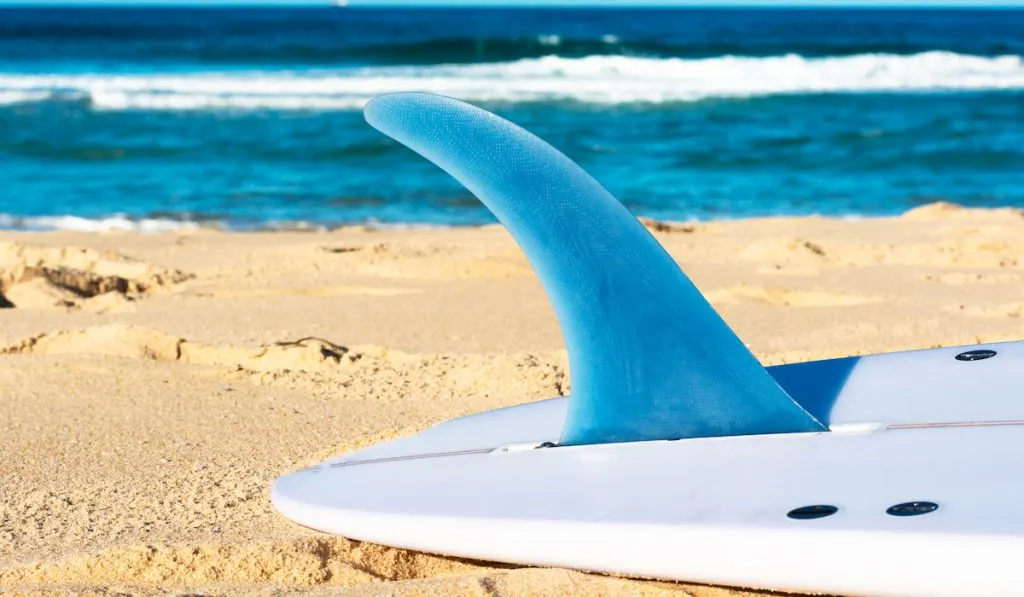
While it may not be so direct, bigger fins have more surface area in contact with water. As such, they may feel tighter.
In contrast, small fins may not feel as tight since there is relatively less surface contact with water.
Fin Base
If you are getting a fin with a long base, you can expect some speed and drive.
While fins with shorter bases may not produce similar drive, they are well suited for short moves and quick turns.
Splay
The splay is the relative angle between the middle fin and the fin on the sides.
Side fins, which are usually toed-in, promote board speed, especially when surfing down the line. But when the tip of the side fins is adjusted toward the board’s rails, you should expect increased responsiveness.
Height
The height is the distance from the base of the fin to the tip. This feature of a fin affects stability; taller fins offer more ease while handling them.
Shorter fins are more suitable for advanced surfers, and they are great for smooth rides, quick turns, and tricks.
Foil
Fin foil is basically the shape or curve of the sides of the fins. This feature is vital since it affects the flow of water.
Middle fins are usually convex on both sides. The side fins are concave on the inside and convex on the outside.
Fins with concave/curve insides less traction and increased speed and fluidity. However, fins with flat insides are great for control and balance.
Cant
The cant is the degree between the fins tilt and the base of the surfboard. When this angle is 90 degrees, we say the fin has a 90-degree cant or no cant. This type of cant promotes faster rides.
If the cant angle exceeds 90 degrees, you can expect increased responsiveness and easier turns.
Surfboard Fin Setups
Surfboards come with varying fin configurations. The number of fins on a surfboard varies, and the type of fins varies depending on this.
We explore some of the most common surfboard fin setups below.
Single Fin
Single fins are perfect for longboards. This fin setup is tailored for steering. If you intend to involve yourself in straight shot surfing, the single fin is an ideal option.
Surfing with a single fin can be quite beneficial. It can help you learn to surf proximal to the wave’s power source, making it easier for you to find sweet spots.
Twin Fin
The twin fin setup is also called dual fin or two fin configuration. This type of setup is more common on shorter surfboards.
If you want more maneuverability than what you’ll get with the single fin, you should opt for this fin setup.
Tri Fin
The tri fin is also called the thruster and comes with 3 fins. It is the most common fin setup across various types of surfboards.
Compared to the twin fin, the third fin in the tri-fin adds more control and stability to the board. But you may experience some drag due to the extra fin.
Tri fins make it easy for surfers to pump water around the tail to produce drive. These fins also generate a huge hold in powerful surfs.
In the tri-fin setup, the middle fin is located closer to the tail of the board. Then the side fins are tilted toward the middle of the board, generating more speed and tracking.
All in all, the tri-fin is suited for surfing tricks and high-performance surfing.
2 Plus 1 Fin
The 2 plus 1 fin is similar to the tri fin in having 3 fins. But the difference is that the middle fin of the 2 plus 1 setup is a single longboard fin.
For a beginner, this setup allows stability. As one progresses to intermediate level surfing, the side fins provide the thrust for making side-to-side rail turns.
Quad Fin
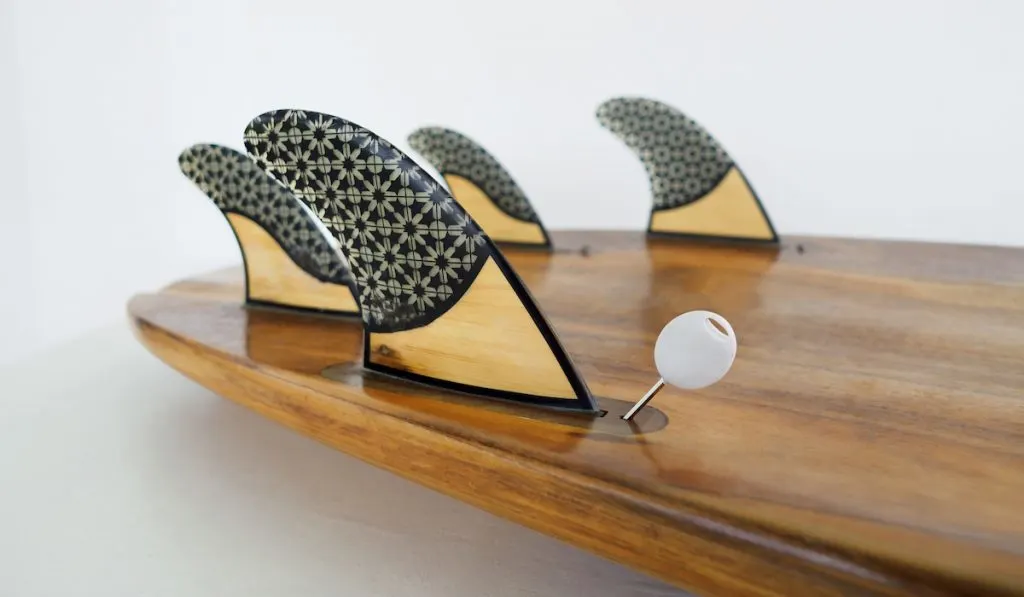
As you may have guessed, the quad fin setup comes with 4 fins. Quad fins combine some of the best features of tri fins and twin fins.
Compared to tri fins, you get more control, and like twin fins, there is no center fin to create a drag. But beyond these, you also get speed.
Speeding with this setup is made even more feasible when the back fins are moved closer to the rails. With them in this position, there would be even less drag and more speed.
5 Fin
Unlike the other setups on this list, the 5-fin setup does not mean 5 fins are connected to the board. Rather, in this case, the box comes with 5 fins that you may combine as you wish.
The 5-fin option allows you to experience different fin setups with just one surfboard. It gives you more options for various surf conditions.
How Many Fins Do I Need for My Surfboard?
The number of fins you need for your surfboard depends on the conditions you want in your surf. For one, if you are after control and steering, single fins would give you enough drag for this.
If you desire speed, you could get the twin fin; you could get the quad fin for even more swiftness. But if you want control and responsiveness alongside that speed, you could get the tri-fin.
As a beginner, if you want a cluster, get a 2 plus 1 fin. The setup offers stability and responsiveness. The 5-fin setup is perfect if you need multiple setup options on one board.
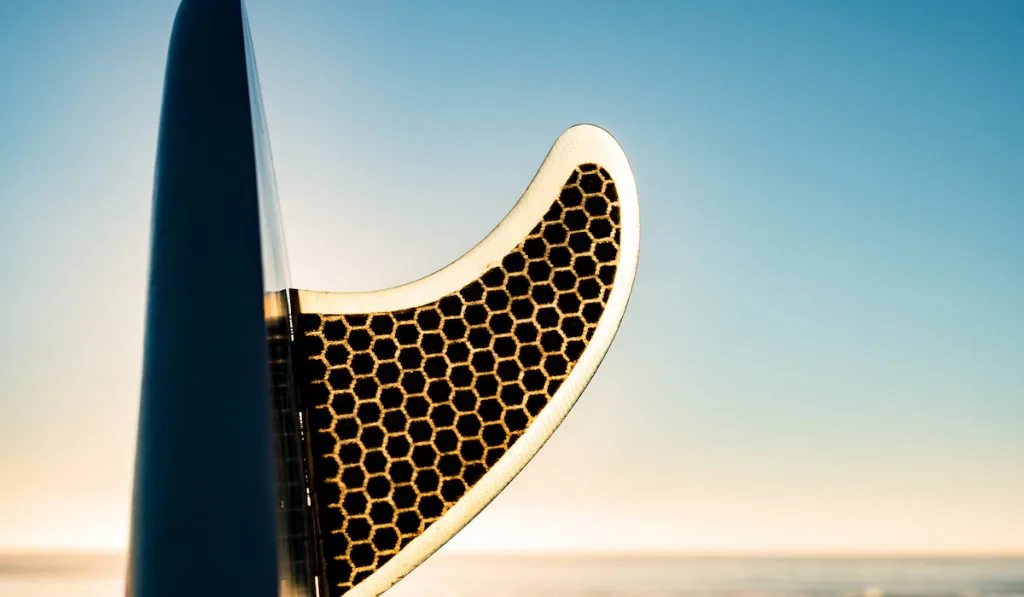
Final Thoughts
Surfboards can be used without fins. But without fins, surfers may not be able to maneuver or steer their boards easily.
This difficulty steering or controlling a board without fins would be even more pronounced in non-expert surfers.
So, while it is possible to surf without fins, the ride is more enjoyable when they are attached.
Resources
- https://www.sandiegosurfingschool.com/blogs/surfing/can-you-surf-without-fins
- https://swellsurfcamp.com/surfboard-fins/
- https://www.wetsuitwearhouse.com/blog/why-do-surfboards-have-fins/
- https://www.degree33surfboards.com/blogs/gettin-pitted/14071417-fins-how-many-do-i-need
- https://wavearcade.com/buyer-guide/fins/surf-fin-box-systems/
- https://www.4wfs.com/knowledge/general-knowledge/fin-adjustments/
